Tips For Public Playground Safety
Each year, about 200,000 children are treated in U.S. hospital emergency
rooms for playground equipment-related injuries - an estimated 148,000 of these
injuries involve public playground equipment and an estimated 51,000 involve
home playground equipment. Also, about 15 children die each year as a result of
playground equipment-related incidents. Most of the injuries are the result of
falls. These are primarily falls to the ground below the equipment, but falls
from one piece of equipment to another are also reported. Most of the deaths are
due to strangulations or falls.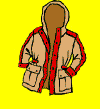
Click on the symbol for safety news about
the danger of strangulation from drawstrings on outerwear
The U.S. Consumer Product Safety Commission (CPSC) offers
consumers these playground safety tips from its "Handbook for
Public Playground Safety."
- Protective Surfacing - Since almost 60% of all
injuries are caused by falls to the ground, protective
surfacing under and around all playground equipment is the
most critical safety factor on playgrounds.
- Asphalt and concrete are unacceptable. They do not have
any shock absorbing properties. Similarly, grass and turf
should not be used. Their ability to absorb shock during a
fall can be reduced considerably through wear and
environmental conditions.
- Certain loose-fill surfacing materials are acceptable,
such as the types and depths shown in the table:
Fall Height In Feet From Which A Life Threatening
Head Injury Would Not Be Expected |
| Type of Material |
6" Depth |
9" Depth |
12" Depth |
| Double Shredded Bark Mulch |
6 |
10 |
11 |
| Wood Chips |
6 |
7 |
12 |
| Fine Sand |
5 |
5 |
9 |
| Fine Gravel |
6 |
7 |
10 |
- Certain manufactured synthetic surfaces also are
acceptable; however, test data on shock absorbing
performance should be requested from the manufacturer.
- Fall Zones - A fall zone, covered with a protective surfacing
material, is essential under and around equipment where a child might fall.
This area should be free of other equipment and obstacles onto which a child
might fall.
Stationary climbing equipment and slides should have a fall zone extending a
minimum of 6' in all directions from the perimeter of the equipment.
Swings should have a fall zone extending a minimum of 6' from the outer edge
of the support structure on each side. The fall zone in front and back of
the swing should extend out a minimum distance of twice the height of the
swing as measured from the ground to the top of the swing support structure.
- Swing Spacing - To prevent injuries from impact with
moving swings, swings should not be too close together or too
close to support structures. Use the following guide:
- No more than two swing seats suspended in the same
section or bay of the support structure. Use the following
clearances for conventional to-fro swings:
- Horizontal distance between adjacent swing seats -
at least 24".
- Horizontal distance between swing seat and adjacent
structural component - at least 30".
- No more than one tire swing suspended in same section or
bay of support structure. Distance between the outer-most
edge of a tire swing and the adjacent upright of the
support structure - at least 30" when the tire is
swung to a position closest to the support structure.
- No swings attached to multi-activity equipment.
- No heavy animal swings with rigid metal framework.
- Elevated Surfaces - Platforms more than 30"
above the ground should have guardrails to prevent falls.
- Potential Head Entrapment Hazards - In general,
openings that are closed on all sides, should be less than
3-1/2" or greater than 9". Openings that are between
3-1/2" and 9" present a head entrapment hazard
because they are large enough to permit a child's body to go
through, but are too small to permit the head to go through.
When children enter such openings, feet first, they may become
entrapped by the head and strangle.
- Potential Entanglement Hazards - Open "S'
hooks, especially on swings, and any protrusions or equipment
components/hardware which may act as hooks or catch-points can
catch children's clothing and cause strangulation incidents.
Close "S" hooks as tightly as possible and eliminate
protrusions or catchpoints on playground equipment.
- Pinch or Crush Points - There should be no exposed
moving parts which may present a pinching or crushing hazard.
- Playground Maintenance - Playgrounds should be
inspected on a regular basis. If any of the following
conditions are noted, they should be removed, corrected or
repaired immediately to prevent injuries:
- Hardware that is loose or worn, or that has protrusions
or projections.
- Exposed equipment footings.
- Scattered debris, litter, rocks, or tree roots.
- Rust and chipped paint on metal components.
- Splinters, large cracks, and decayed wood components.
- Deterioration and corrosion on structural components
which connect to the ground.
- Missing or damaged equipment components, such as
handholds, guardrails, swing seats.
For more detailed information on playground safety, refer to
the CPSC's Handbook
for Public Playground Safety . To obtain a free copy, send
your name and address to: Publication Request, U.S. Consumer
Product Safety Commission, Washington, DC 20207, and ask for the
"Handbook for Public Playground Safety," publication #
CPSC-324.
Click here to go to Playground
Safety Tips from Hotel Fun 4 Kids
|
To view Playground Safety Tips Click Below:
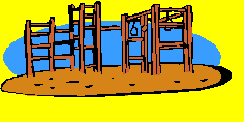
See the following sections for other travel news about
safety:
First Aid Safety Tips for Managing an
Emergency Click Below:

For Playground Safety News Click Below:
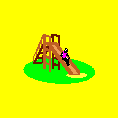
For Balloon Safety Click Below:

For Beach/Pool Safety News Click Below:
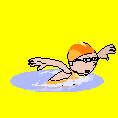
For Crayon Safety Click Below:

For Car Safety News Click Below:
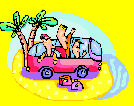
For Bike and Bike Helmet Safety News Click Below:
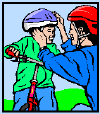
For Crib Safety News Click Below:
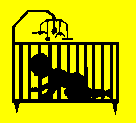
For Airplane Safety Click Below:

For Helmets for Skiers and Snowboarders,
Click Below:

For Skiing Safety Click Below:
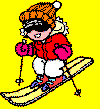
For Safety News for Children's Clothing Click Below:

For Scooter Safety News Click Below:

Back to
Travel Safety News |